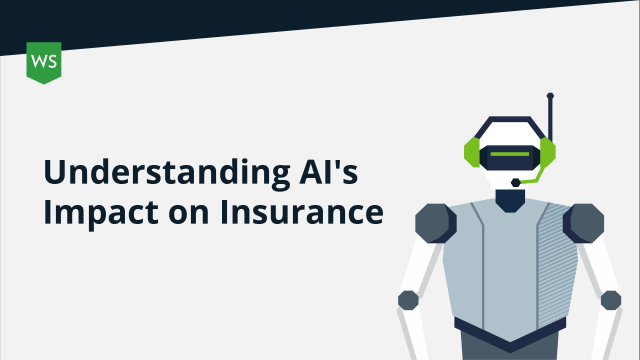Blog
Environmental Liability Insurance versus RWI Environmental Coverage in M&A Transactions
Learn what you need to know to understand your environmental risk and what coverage you need to help limit that risk.
A growing concern in many mergers and acquisitions (M&A) is the potential for environmental risks. Whether you are looking to acquire a manufacturing site or even just a tract of land for future construction, some environmental risk may be part of the package.
This article will examine what you need to know to understand your environmental risk and what coverage you need to help limit that risk.

When looking for the ability to obtain coverage from a representation and warranties (RWI) perspective, underwriters typically focus on two aspects:
- Diligence: the work undertaken by the buyer or their third-party providers to verify the truth of the representation
- Underlying insurance coverage: the coverage already in place for the target that is being acquired
RWI underwriters seek to limit their risk in one of three ways. First, when an underwriter feels that a representation is too broad—meaning that it’s unreasonable to make such a representation because it is difficult to show that it’s true—they might seek to limit that statement to “knowledge.”
However, this limitation is often not a viable method of limiting environmental reps because their historical and current status cannot always be proven. An underwriter might only seek to restrict a rep in this way if it was a low risk from an environmental perspective.
The second way an underwriter may limit coverage is by putting environmental reps into what is called a "heightened risk" category. This step, which is done at the quote stage, is a line in the sand to the buyer, demonstrating that extensive diligence is expected in this area. Otherwise, underwriters will add exclusions to the policy.
The third way underwriters can limit their exposure is to have the RWI policy sit "excess and no broader" than any underlying insurance. In this way, the RWI policy forms an excess policy over the existing insurance.
Environmental due diligence most commonly comes in the form of a Phase I Environmental Site Assessment (ESA) that is done to standards set by the American Society for Testing and Materials (ASTM).
With the goal of identifying potential or existing contamination/environmental liabilities, these reports consist of the following components:
- database search
- historical records search
- interviews
- site inspection
- opinions and conclusions from the environmental engineering firm
Depending on the planned future use of the property, there may be the need or recommendation to proceed with a Phase II study if Phase I identifies any actual or potential Recognized Environmental Conditions (RECs), Controlled Recognized Environmental Conditions (CRECs), or Historical Recognized Environmental Conditions (HRECs).
A Phase II study is a deeper dive into the identified RECs from Phase I. It typically involves:
- soil and groundwater sampling
- testing of the samples for contaminates of concern (COCs)
- vapor intrusion testing
If contamination is discovered, further sampling and testing are typically completed to determine the full scope of the contamination on the subject property.
It is worth noting that Phase I ESAs are from a "bird's eye view," so there is a possibility that existing contamination at the subject property will not be identified. Also worth noting is that a clean Phase I ESA does not protect the property owner from third-party claims or lawsuits.
Furthermore, if a property owner fails to get a Phase I conducted, and contamination is discovered later, they will likely be held responsible for any required cleanup. The innocent landowner defense does not work in this case. Under federal law, the landowner is responsible for the environmental condition of their property.
Pollution Legal Liability (PLL) is a type of Environmental Liability Insurance used for insuring real estate. PLL typically covers third-party claims for bodily injury and property damage resulting from a pollution condition on, under, or migrating from, onto, or through an insured location.
Coverage is also provided for onsite cleanup resulting from both first- and third-party claims. Pollution condition definitions can be broadened to include risks such as mold and legionella, meth labs, and illicit abandonment. Coverage enhancements such as Transportation (first- and third-party), Business Interruption (first- and third-party), Non-Owned Disposal Sites, and Legal Defense are also available.
Coverage can be written for a single location, entire portfolio, select locations, and divested locations. Generally speaking, economies of scale work in your favor, meaning the more locations covered, the lower the cost per location.
Coverage is written on a claims-made and reported basis. Therefore, policies only pay claims presented during the policy term or within an established extended reporting period after the policy's expiration. Coverage is available for both preexisting and new pollution conditions.
Limits depend on your overall risk tolerance, history of the property, its location, and planned future use. Although this narrative is starting to change, environmental claims tend to be characterized as "low frequency" and "high severity."
If the worst-case scenario happens, these claims can be costly. Primary limits are commonly available up to $25 million per pollution condition and $25 million aggregate, and unsupported excess is also available in the marketplace if there is interest in higher coverage limits.
If environmental due diligence is clean with no RECs identified nor the recommendation to perform any additional Phase II testing, the next step is to assess if the underlying PLL policy is adequate in terms of limits and coverages. If the diligence is not clean, meaningful coverage needs to be negotiated for the following:
- any potential unknown conditions not identified by the reports
- any potential impacts from neighboring third parties
- any new conditions that could arise
At least with respect to sites that have known contamination, it may be difficult to have an underwriter assume the risk for potential cleanup of the known contamination. However, once any known conditions have been addressed and remediated, coverage can be added back onto a policy upon receipt of a "No Further Action" letter from the local regulatory body.
If existing coverage is too low, then we face a potential hurdle. If the existing limit is too small, the RWI underwriter may seek to put separate retentions above the limit before their policy kicks in. This step would leave you with a gap in coverage.
As an example, let's say the target has a $5 million policy, but a company of its size and nature typically has a $10 million limit. Underwriters may put a $10 million retention on any environmental claims, meaning once you had exhausted the $5 million limit, you would need to pay $5 million in damages yourself before the RWI kicked in.
This problem can be handled by increasing the target's policy limit prior to putting the policy into run-off or transferring it to the buyer.
If the policy is inadequate in terms of its coverage provision, it is more challenging to solve. Any gaps in the policy could mean a claim is not picked up by the environmental carrier. That occurrence means the RWI underwriter would also not pick it up even when the equivalent limit of loss was incurred.
It's essential to understand your existing coverage and your local and federal environmental laws in order to know if you are at risk.
Timeframes are key. Environmental issues can take many years to surface. If the timeframe for the policy's lookback period is longer than the current policy allows, you will need to confirm the insurance would respond in the event of a more extended lookback period.
We expect environmental coverage and its interaction with RWI will become a key risk issue on a transaction-by-transaction basis. Using a broker with strong relationships between the RWI and environmental teams is critical to maintaining the protection you need.
Authors
Table of Contents















